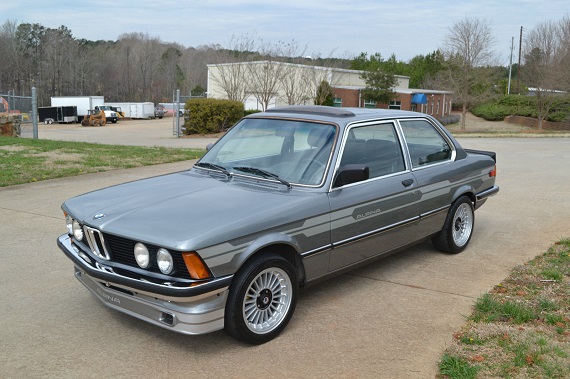Euro cars always hold a special appreciation for me, especially from the 1970s and 1980s. First off, they were much better looking, generally with slimmer bumpers and larger, more clear class lights. There were colors and interiors that we didn’t get in the U.S. as well, helping to set yourself apart. Sometimes there were low-spec engines not imported, but usually the output of the motors that were similar to U.S. cars was higher, giving more performance to enthusiasts. Sometimes that gulf was huge; while usually around 10% higher, a great example is the Quattro which was a full 25% more powerful in Europe than the U.S. restricted version. But as we got towards the late ’80s, the gap inbetween both the looks and performance of the Euro models versus the U.S. models closed steadily. True, in some cases we still didn’t get the full-fat versions of cars like the M3 until the E46 chassis. But for most models, there was a negligible difference. When it came to the BMW E31, in fact, there were almost no differences between the U.S. models and European models; styling was exactly the same, as were the wheels, most of the colors and interiors, and the basic suspension and engine. So, it’s just not nearly as exciting to see a European-spec newer model like this ’91 850i pop up for sale, though it is a bit odd:
Author: Carter
There were a few things missing from the earlier Alpina E21 post; notably, some of the details of the car were missing like the all important unique engine, suspension, and documentation that would help support the story of its existence. The same cannot be said for this car. Let’s go down the list of what makes this car really and truly special. First, it’s one of the last of the classic 560SECs made. Already these cars are appreciating in value, but this car also has quite low miles at only 37,500 covered since new. That low total is matched by near perfect condition inside and out. But the real value lies in the modifications; super tuner AMG, on its way into the Mercedes-Benz fold, went out with a roar with the M117/9 6.0 32 valve V8 pushing nearly 400 horsepower. While that may seem trite today, the numbers produced by the AMGs in the 1980s were enough to get your into the halls of true supercar royalty. Additionally, this car features with wild widebody kit, massive 3-piece BBS/AMG wheels and some wicked interior alterations. On top of that, there’s documentation to support it – does it get more collectable in the AMG world?
CLICK FOR DETAILS: 1990 Mercedes-Benz 560SEC AMG 6.0 Widebody on eBay
11 CommentsProvenance is something very important to many consumer goods; slap a brand name on any good and it increases the value of an otherwise ordinary product exponentially even if it’s the same formula as the budget no-name product. People are attracted to names that they recognize, and of course therefore more likely to buy those products even if they are more expensive. And in the BMW world, if 1980s BMWs were increasing in value that takes a backseat to the microscope on Alpina models. Yet, as with many tuners of the 1980s, not only is it possible to buy replica parts today, but even in period you could buy all of the pieces and slap them on just about any car. In those cases, though outwardly they look identical at times to the “real” cars that were assembled at the factories, they don’t tend to hold the same value. That’s why today’s European-spec 1982 320i is an interesting case – is it an Alpina?
CLICK FOR DETAILS: 1982 BMW 320i Alpina on eBay
4 CommentsA Mercedes-Benz W125 leads an Auto Union Type C – the height of power for these Grand Prix cars in 1937 As we’ve seen in…
Comments closedFrom my perspective, watching auctions like Barrett-Jackson has always been a bit of detachment from reality. The numbers thrown at cars over the past decade are simply unfathomable to most and somewhat laughable at the same time. The frenzied auctions for economy cars with truck motors in them have been staggering; simply being witness to the Hemi ‘Cuda insanity was astonishing. In many ways, it strikes me as a historian much like the famed “Tulip Mania” in 1600s Netherlands. Speculation on the value of tulips reached the point where a single tulip bulb was worth around 10-15 times the average worker’s salary. For a flower. The resulting semi-insanity ended up partially ruining the Dutch economy, though it was not solely to blame and leaves out many other events that transpired. To me, watching shows like “Antiques Roadshow” often raises similar issues. In particular, recently the show has revisited older shows to display updated appraisals. In general, nearly all of the speculated values a decade on are lower, sometimes significantly. There’s one area that isn’t though – the Asian market, which if anything is much stronger than it was a decade ago thanks to the surging Chinese economy. For some time, the focus on muscle cars eclipsed the old money; very special coach-built pre-War cars used to be where the go-to value was. And while the E30 may be a flash in the pan with people lamenting when they could have bought an example for $10,000 that’s now worth 4 times that, consider this: in 1956, someone bought a Mercedes-Benz 540K special roadster for $2,167 (about $18,600 today). The last one that sold cleared $7.85 million dollars. How’s that for a good investment?








